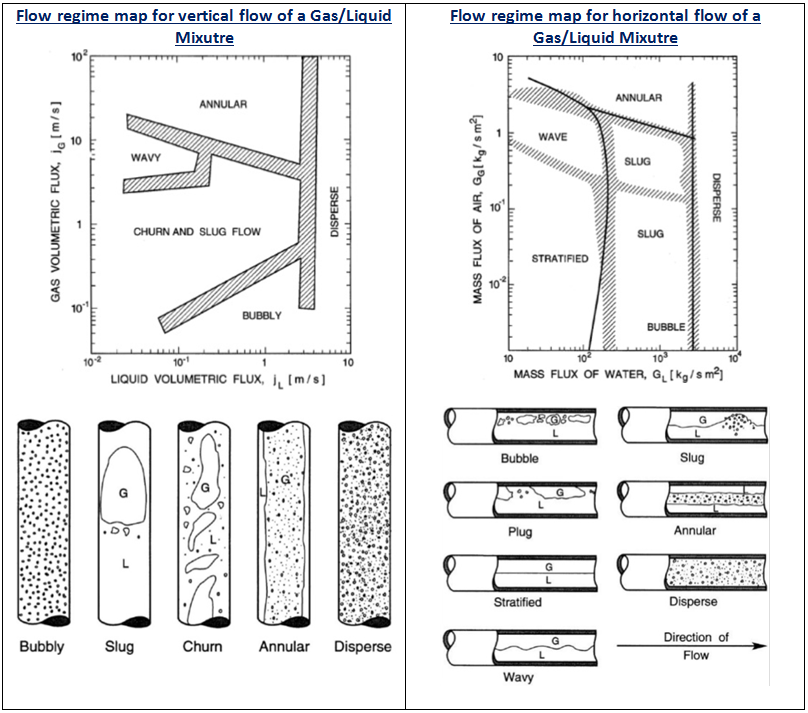Flow Regime maps are useful tools for getting an overview over which flow regimes we can expect for a particular set of input data. Each map is not, however, general enough to be valid for other data sets. It gives a description of the geometrical distribution of a multiphase fluid moving through a pipe. Different flow regimes are used to describe this distribution, the distinction between each one being qualitative and somewhat arbitrary. In vertical or moderately deviated pipes, the most common flow regimes for gas-liquid mixtures are bubble flow, slug flow, mist flow, churn flow and annular flow. In horizontal wells, there may be stratified or wavy stratified flow in addition to many of the regimes observed in vertical wells. Two-phase flow regimes have often been presented as plots, or maps, with the phase velocities or functions of them on each axis. Earlier maps were named after their authors, for example Griffith-Wallis, Duns-Ros and Taitel-Dukler. The following Figures give an example of flow regime map for a vertical and horizontal flow of a Gas/Liquid mixture.

Bubble flow:
The gas phase is distributed in the liquid phase as variable-size, deformable bubbles moving upward with zigzag motions. The wall of the pipe is always contacted by the liquid phase.
Slug Flow:
Most of the gas is in the form of large bullet-shaped bubbles that have a diameter almost reaching the pipe diameter. These bubbles, called Taylor bubbles, move uniformly upward, and are separated by slugs of continuous liquid that bridge the pipe and contain small gas bubbles. The gas bubbles velocity is greater than that of the liquid.
Churn Flow:
If a change from a continuous liquid phase to a continuous gas phase occurs, the continuity of the liquid in the slug between successive Taylor bubbles is destroyed repeatedly by a high local gas concentration in the slug. This oscillatory flow of the liquid is typical of churn flow. This flow regime may not occur in small-diameter pipes.
Annular -Mist Flow:
During annular, the liquid phase flows regularly as an annular film on the wall with gas flowing as a central core. Some of this liquid is entrained as droplets in this gas core (mist flow).
The following video demonstrates common liquid-air flow regimes that can be established in pipes at various liquid and air flow rates and various angles of pipe inclination:





